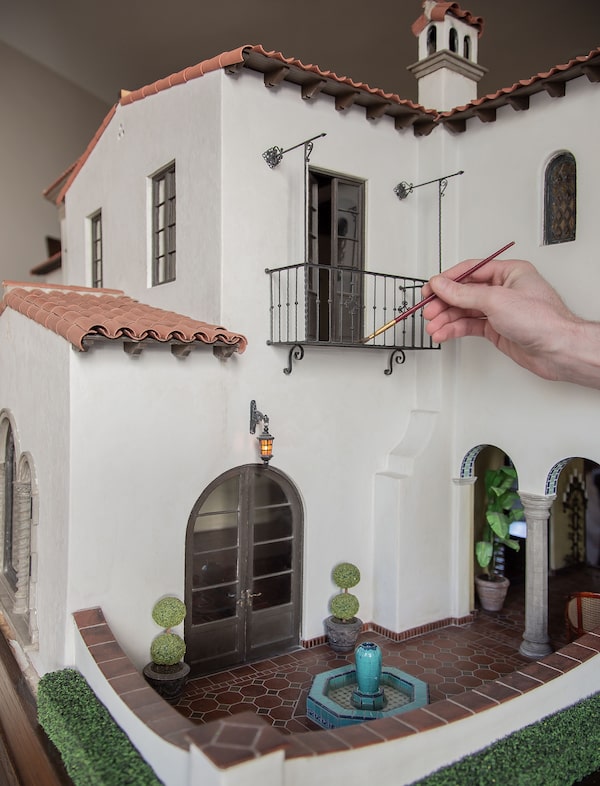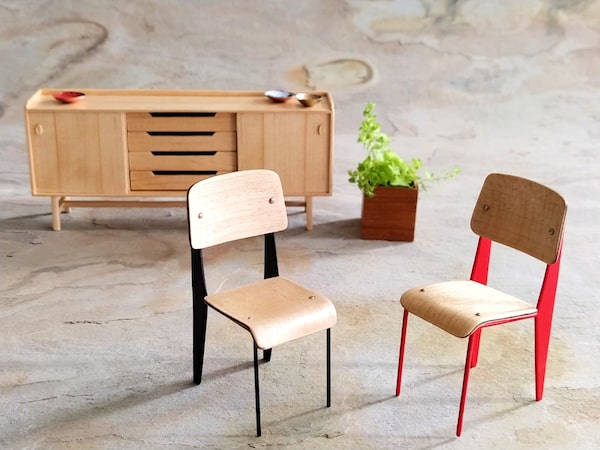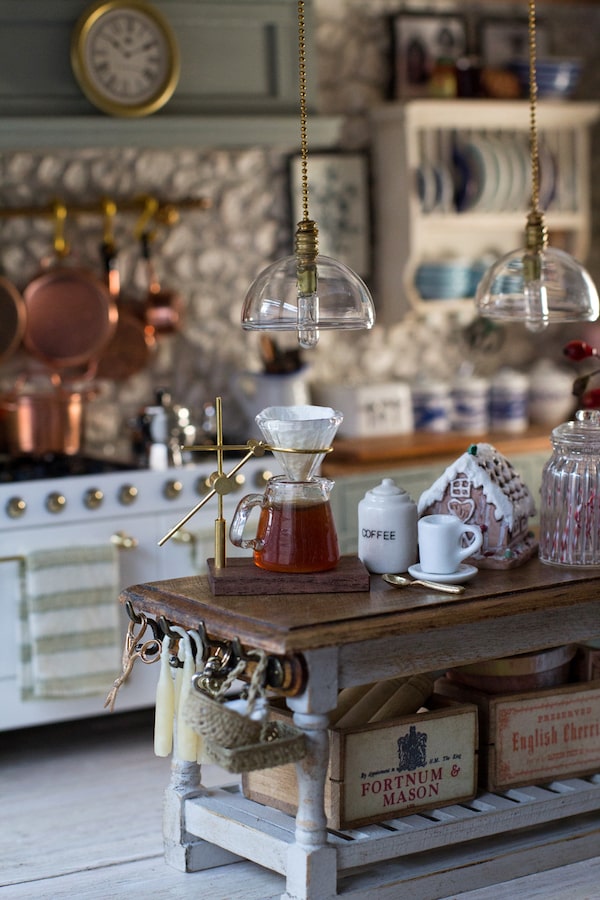
Allison + Cam/The Globe and Mail
When Maria Fowler purchased the Little Dollhouse Company more than 20 years ago, she thought she was getting into a niche business popular with children and hobbyists. She had no idea she would soon have a clientele that includes a rock star, two Oscar-winners and a diminutive sex therapist.
“I honestly never know who will walk through the door,” Fowler says, whose whimsical store in Toronto is filled to the brim with every tiny stick of furniture and itty-bitty accessory a person could want to create the dollhouse of their dreams. “Dr. Ruth [Westheimer] came in one day. She’s an avid collector and, basically, a miniature herself.”
“When she left she said, ‘Maria, do you know why miniaturists make the best lovers?’” Fowler says, still chuckling at the memory. “It’s because we have the best imaginations.”
Style Advisor April 2021 edition: Get your home ready for warmer weather
Over the years, she has also served Whoopi Goldberg, Helen Mirren and Eddie Vedder, the lead singer for Pearl Jam. Since COVID-19 hit, the celebrity walks-ins have stopped. Fowler says she misses the face-to-face interaction with her customers but has not had the time to give it much thought.
Unlike countless businesses that have suffered during the pandemic, Fowler has never been busier. In the past year, interest in miniatures has exploded as a younger generation of stuck-at-home hobbyists has discovered just how cathartic and fun it is to build tiny versions of spaces that reflect how they want to live. “With miniatures, you can make a world exactly as you want it,” Fowler says. “You have absolute control over it, and during COVID especially, that has been very empowering.”

Los Angeles artist Chris Toledo's fully furnished 1:12 scale models are inspired by his city’s 1920s architecture.Supplied
Social media has helped spread the word about this once-sleepy sector, making it easier for customers and artisans to find each other. Etsy, Pinterest and Tumblr are replete with miniatures for sale to accommodate everyone’s personal tastes, while carefully curated Instagram accounts are filled with glossy photographs of rooms that look like they belong in Architectural Digest or a Roche Bobois showroom. On the feed of Lavender Belle Miniatures (@lavenderbelle_miniatures), there are rooftop gardens with pots of succulents and working fountains. Dr. Kwandaa Roberts (@tinyhousecalls) includes downscaled versions of Hamptons-inspired beach houses. Los Angeles artist Chris Toledo (@ibuildsmallthings) does up fully furnished 1:12 scale models inspired by his city’s 1920s architecture and sells them for US$150,000 to $200,000 apiece.

After its exterior reno, Alison Lawler-Dean’s dollhouse is ready for decor.Supplied
“Until a year ago, I had no idea this world of miniatures existed,” says Alison Lawler-Dean, a marketing executive in Toronto who found an antique dollhouse on Instagram and has been decorating it with her seven-year-old daughter. “I drove out to Oakville, picked it up contact-free from this lady’s porch. Structurally, it needed a full repainting, and all the doors and windows had to be redone.”
Then the fun started. “Instagram is like going down a rabbit hole of teeny-tiny riches,” says Lawler-Dean, who started buying select pieces such as a beautiful teal sofa from Revive Minis (@reviveminis) as well as making her own furniture and accessories. She’s currently inspired by Aubrey Srnec (@okay.minis), who is recreating her small Toronto apartment, and Cath Square (@thesquaretospare) whose DIY tutorials on YouTube show amateur miniaturists how to marble countertops, lay herringbone floors, build bookcases and make a pint-sized Bento box of sushi. “It’s a thriving, incredibly supportive community of people who help each other make their interior-design dreams real,” Lawler-Dean says.

Fernando Setien’s furniture often recreates a client’s own full-sized pieces.Supplied
Fernando Setien (@fernandosetien), a contemporary fine furniture “mini”-maker in Barcelona, says many of his clients ask him to make exact replicas of life-sized furniture they already have in their homes. Others come to him because they love the clean lines and modern aesthetic of his sideboards, cabinets and Paimio chairs, which range in price from US$100 to $1,200. “I believe, because of all the closures, people have had the time to rediscover the wonders of play,” Setien says. “Miniatures are the perfect escape.”
That feeling is shared by Jacqueline Greenwood, who bought her first dollhouse second-hand when COVID-19 began and her job in child care abruptly came to an end. Her intention was to furnish it with pieces she made herself and give it to one of her young grandchildren. That, she says now, is not going to happen.

Jacqueline Greenwood bought her first dollhouse second-hand at the start of the pandemic.Supplied
“I love it more than I imagined I would,” Greenwood says. Her Instagram account, @wildwood_miniatures, has over 21,000 followers who adore the life-like authenticity of her pieces such as functional hurricane lanterns, an Aga stove, hand-painted china plates and distressed kitchen cupboards in a lovely robin’s-egg blue. “At first, I worked on it during weekends, but now it’s become a fantastic focus of my day,” Greenwood says. She fully furnished her first dollhouse, an English country house, and is now on her second project, a country store. “The most complicated piece I’ve worked on is a dollhouse within my dollhouse, which is a replica of the Rosehill cottage featured in the movie The Holiday.”
For this retired Torontonian, the saving grace of miniatures is that they’ve provided direction and purpose, and introduced her to a whole community of like-minded people who love make-believe and design. “This has been an incredibly intense time for so many people and I think our minds can easily run away from us with worry and concern,” Greenwood says. “The world of miniatures is like anything creative. It brings you into the moment and it keeps you in the moment, where creation works its magic.”